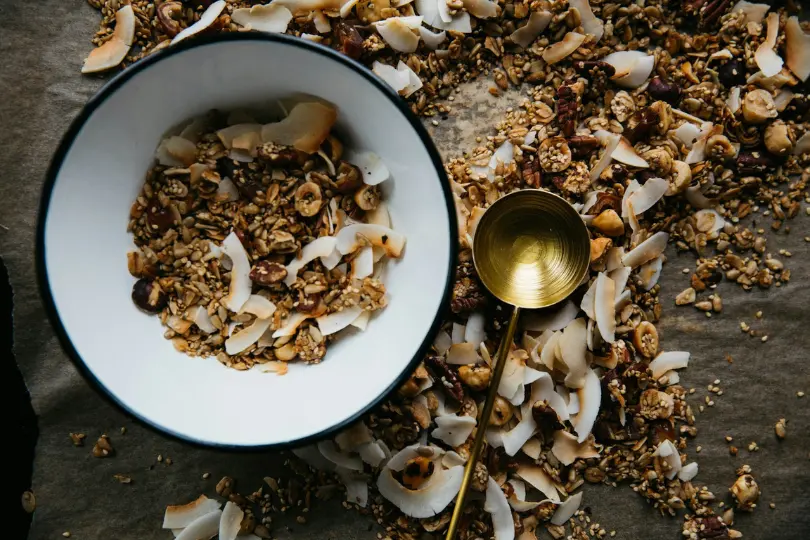
Although dietary fiber is a crucial part of a balanced diet, it is frequently disregarded. Your ability to make better dietary decisions that support general health and well-being can be enhanced by your knowledge of the advantages and sources of fiber.
All the information you want about dietary fiber is included on this page, including its sources, kinds, health advantages, suggested consumption, and methods for adding it to your diet.
You may also like:
- What You Need in Your Daily Supplements
- Pea Protein: A Powerhouse for Plant-based Nutrition
- 5 Changes You Can Make to Benefit Your Health
What is Dietary Fiber?
Dietary fiber is a kind of carbohydrate that the body is unable to process. It is often referred to as roughage or bulk. Unlike other carbohydrates, the fiber goes through the digestive system undigested and is not converted into sugar molecules. Because of this property, fiber can assist in controlling how sugars are used by the body, which helps to control blood sugar and appetite.
Dietary fiber comes in two primary varieties: soluble and insoluble. While insoluble fiber does not dissolve and contributes to the volume of stool, soluble fiber does dissolve in water to produce a gel-like material.
Types of Dietary Fiber
Dietary fiber comes in two main varieties: soluble and insoluble. When soluble fiber dissolves in water, it becomes a gel-like material that lowers blood sugar and cholesterol.
Its high foods include barley, psyllium, apples, carrots, citrus fruits, oats, peas, and beans. Contrarily, insoluble fiber encourages material to pass through the intestines and gives stool more volume, which is advantageous for people who experience constipation or irregular stools.
Whole-wheat flour, wheat bran, beans, nuts, and vegetables, including potatoes, cauliflower, and green beans, are foods high in this kind of fiber.
Health Benefits of Dietary Fiber
Dietary fiber has a wide range of proven health benefits. Fibre helps control how sugars are used by the body, which in turn helps to control blood sugar and appetite. It can help you reach a healthy weight by prolonging and speeding up your feeling of fullness.
Diets high in fiber are linked to a decreased risk of heart disease, stroke, diabetes, obesity, hypertension, and several gastrointestinal disorders.
Additionally, by encouraging periodic bowel movements and the body’s removal of waste, a diet high in fiber can help lower the risk of colon cancer.
Recommended Intake of Dietary Fiber
Age and gender-specific recommendations for daily dietary fiber consumption differ. Men 50 years of age and under should strive for 38 grams of fiber per day, while women in the same age bracket should aim for 25 grams, according to the Institute of Medicine.
The recommended daily intake for persons over 50 drops to 21 grams for women and 30 grams for men. The amount of fiber that children and adolescents require varies based on their age and gender.
It’s noteworthy that the majority of individuals do not consume the recommended amounts of fiber, and doing so can have major health advantages.
Best Sources of Dietary Fiber
The best strategy to satisfy your daily fiber demands is to include a range of high-fiber foods in your diet. Fruits like raspberries and pears; fruit such as apples and bananas; veggies like Brussels sprouts, broccoli, carrots, and sweetcorn; legumes like lentils, black beans, and chickpea; and whole grain foods like oats, barley, quinoa, and brown rice are all excellent sources of dietary fiber.
A rich source of fiber may also be found in nuts and seeds, such as flaxseeds, chia seeds, and almonds. You may easily achieve your fiber requirements by including these foods, which are rich in fiber, into a more varied diet.
How to Incorporate More Fiber into Your Diet
It doesn’t have to be hard to consume more fiber. Make tiny adjustments at first, such as substituting whole-grain items for refined ones and increasing the amount of fruits and vegetables in your meals.
Replace processed snacks with high-fiber foods like nuts, seeds, and fresh fruit. Add beans and legumes to casseroles, salads, and soups to include them in your diet. Moreover, experiment with incorporating a spoonful of flaxseeds or chia seeds into your muesli, yogurt, and smoothies.
You may assist your intestines adjust and lower your chances of experiencing stomach pain by gradually increasing your intake of fiber. For more personalized guidance, consider exploring Lifening Deep Talk Plus, which can provide insights and strategies for a healthier diet.
Conclusion
Dietary fiber is essential for preserving general health and averting several chronic illnesses. You may make wise dietary choices by being aware of the many forms of fiber, their advantages, and the finest sources.
To attain maximum health and well-being, gradually increase your consumption of fiber and include a range of meals high in fiber. Recall that the secret to healthy living is to keep a balanced diet with the appropriate quantity of dietary fiber.
About The Author:
Stacey Smith is a freelance health writer. She is passionate about writing about women’s health, dental health, diabetes, endocrinology, and nutrition. She provides in-depth features on the latest health news for medical clinics and health magazines.




